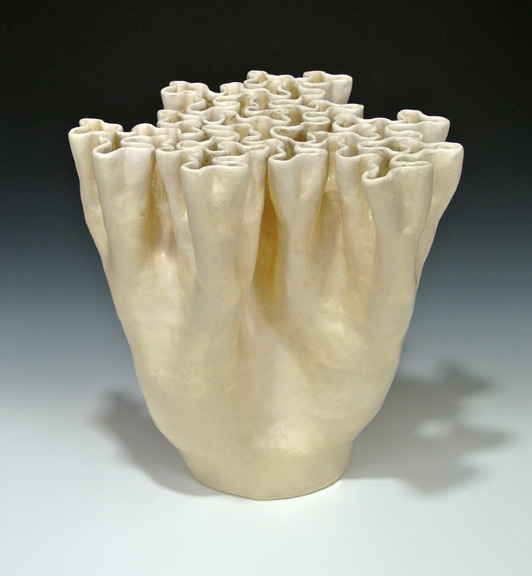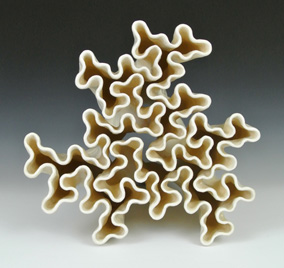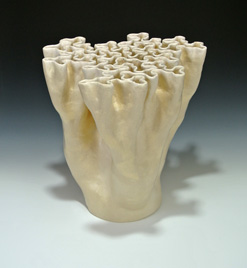Three-Fold Development
This sculpture is based on the first five generations of a fractal curve. The starting point is a circle, and the first iteration produces a three-lobed form. With each iteration, the number of lobes is tripled. The spacing between features is essentially constant throughout a layer, while the three-fold symmetric boundary of the curve becomes increasingly complex. A hexagonal version of this curve is found in Benoit Mandelbrot's book "The Fractal Geometry of Nature". This hyperbolic surface is reminiscent of naturally-occurring corals. The sculpture measures 13" in both diameter and height. It was inspired in part by a 3D-printed model created by Henry Segerman. The sculpture won the 2014 Joint Mathematics Meetings Art Exhibition Prize for Best Textile, Sculpture, or Other Medium.


Click on the smaller photo to see a larger version.
Not for sale